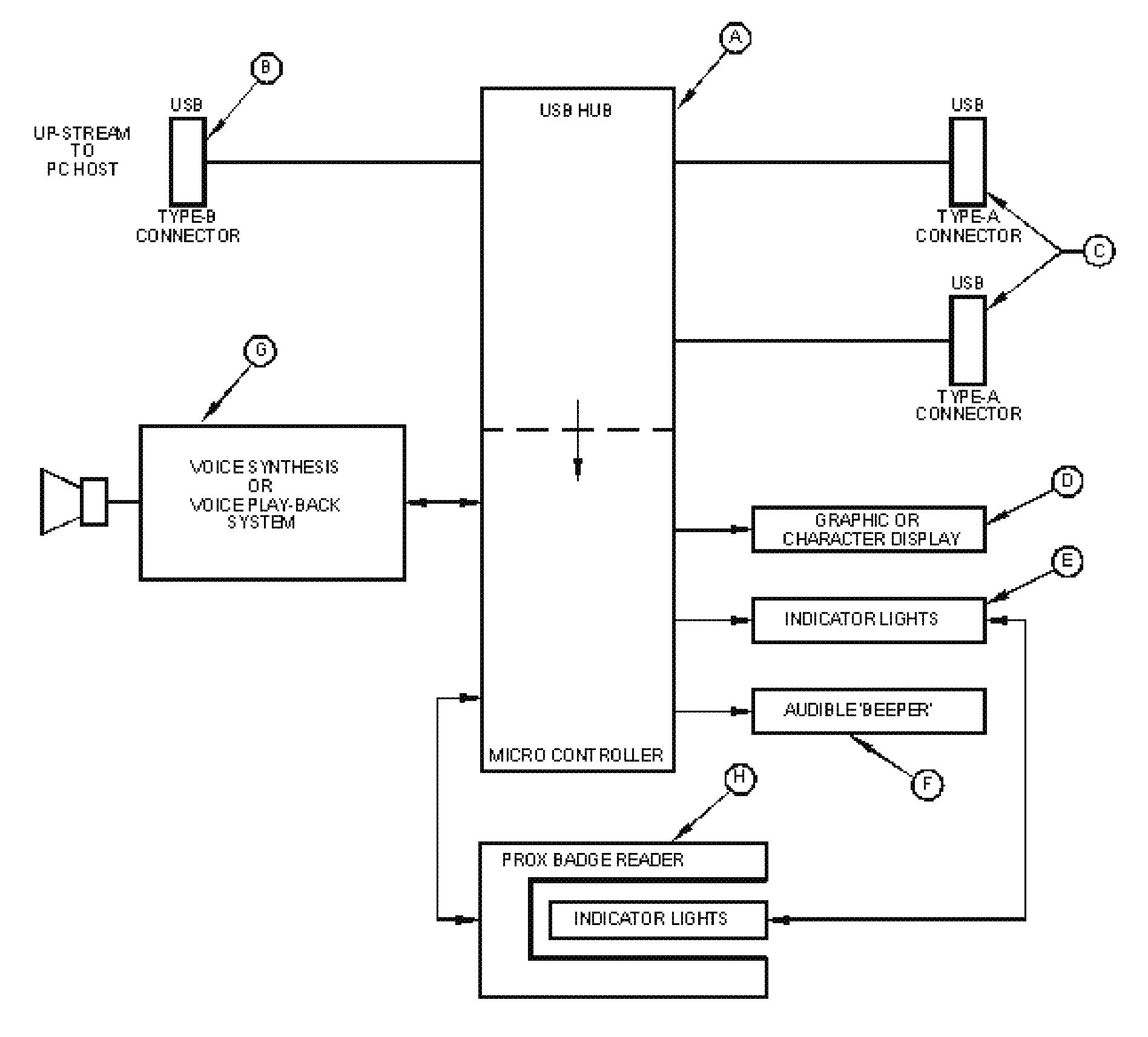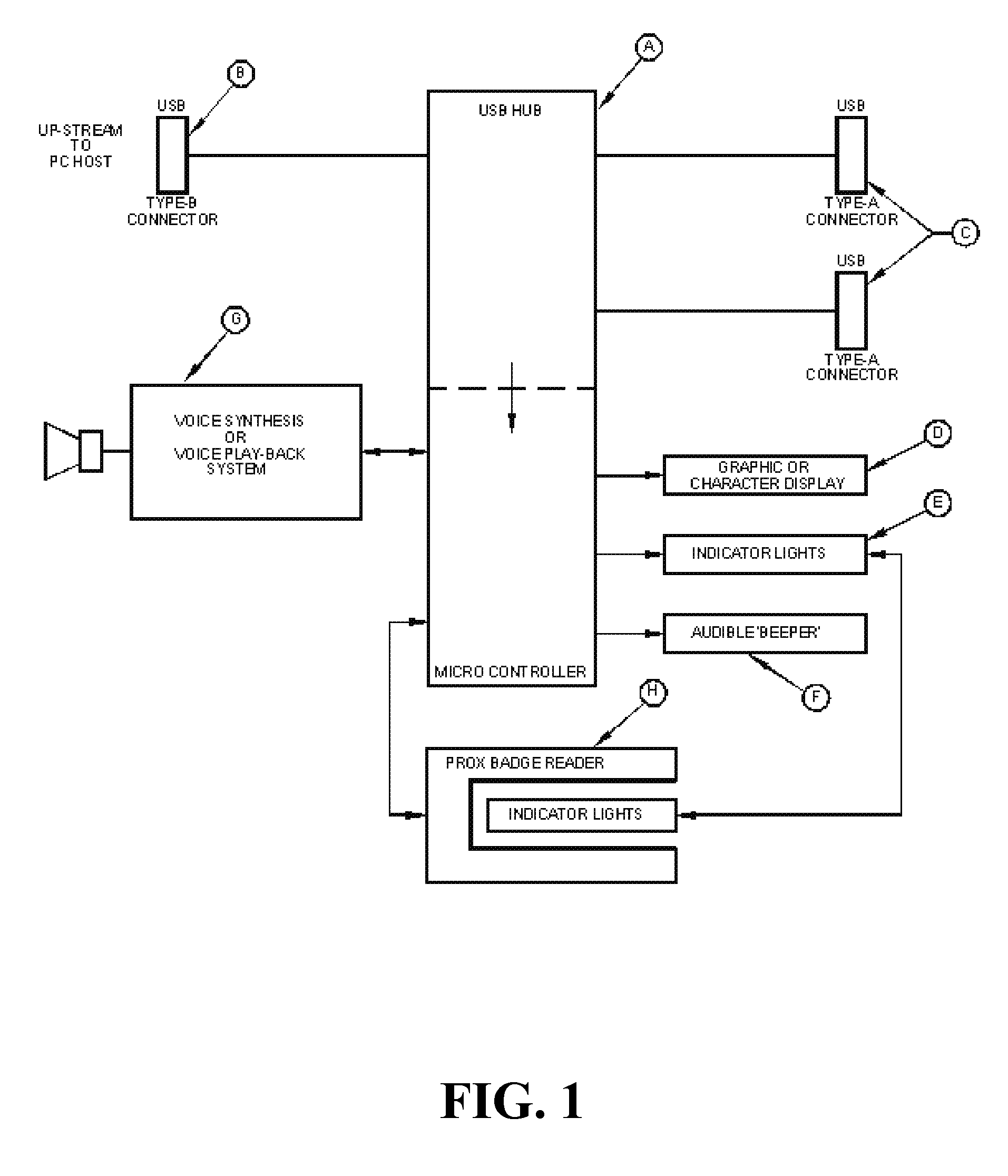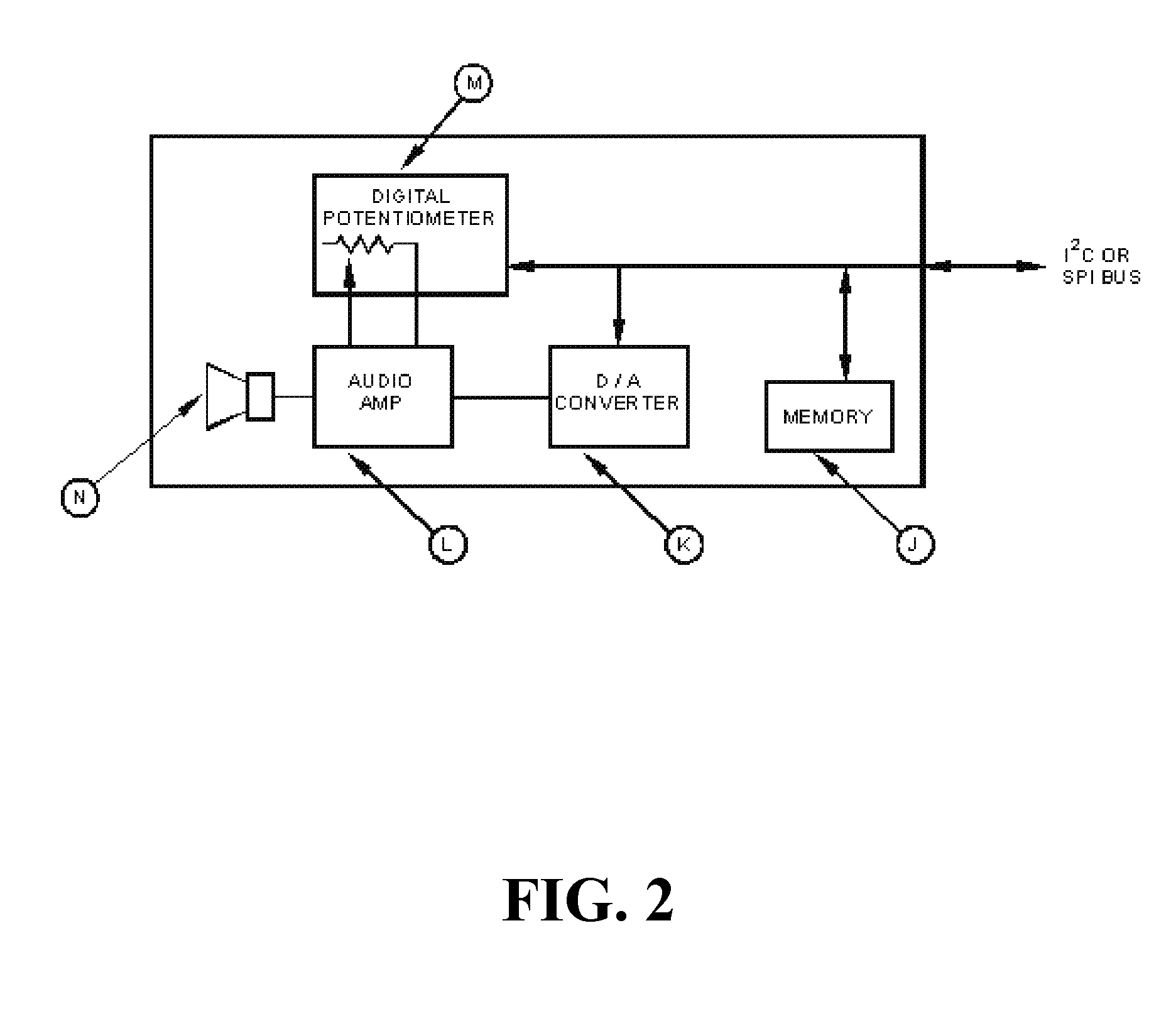Expandable USB data terminal for time & attendance and data collection applications
- Summary
- Abstract
- Description
- Claims
- Application Information
AI Technical Summary
Benefits of technology
Problems solved by technology
Method used
Image
Examples
Embodiment Construction
[0055]The technology described herein will now be described in detail with reference to a few preferred embodiments thereof as illustrated in the accompanying drawings. In the following description, numerous specific details are set forth in order to provide a thorough understanding of the technology described herein. It will be apparent, however, to one skilled in the art, that the technology described herein may be practiced without some or all of these specific details. In other instances, well known operations have not been described in detail so not to unnecessarily obscure the technology described herein.
[0056]Referring now to FIG. 1 through FIG. 5 as part of the data collection terminal, a controlling microprocessor / microcontroller is integrated with a USB hub to provide a simple and low-cost means of future functional expansion through the attachment of functionally related peripheral devices. A currently available component that fulfills this requirement is the Texas Instru...
PUM
 Login to View More
Login to View More Abstract
Description
Claims
Application Information
 Login to View More
Login to View More - R&D
- Intellectual Property
- Life Sciences
- Materials
- Tech Scout
- Unparalleled Data Quality
- Higher Quality Content
- 60% Fewer Hallucinations
Browse by: Latest US Patents, China's latest patents, Technical Efficacy Thesaurus, Application Domain, Technology Topic, Popular Technical Reports.
© 2025 PatSnap. All rights reserved.Legal|Privacy policy|Modern Slavery Act Transparency Statement|Sitemap|About US| Contact US: help@patsnap.com



